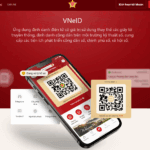Indonesia’s Digital Transformation: A New Era for Tourist Entry
Indonesia, one of the world’s most popular tourist destinations, is set to revolutionize its border entry process with the launch of the “All Indonesia” unified digital arrival platform. This new system, which will become mandatory for all international travelers from October 1, 2025, aims to streamline and modernize the entry experience at airports and other points of entry across the archipelago. The initiative is part of Indonesia’s broader push to enhance efficiency, security, and visitor satisfaction in the post-pandemic era.
- Indonesia’s Digital Transformation: A New Era for Tourist Entry
- Why Is Indonesia Launching a Unified Digital Arrival Platform?
- How Does the All Indonesia Platform Work?
- Timeline and Rollout: When and Where Does the System Apply?
- What Are the Benefits for Travelers and Authorities?
- What Do Travelers Need to Prepare?
- How Does This Compare to Other Countries’ Systems?
- Potential Challenges and Traveler Tips
- Broader Implications for Indonesia’s Tourism Industry
- In Summary
The All Indonesia platform consolidates multiple entry requirements—including immigration, customs, and health declarations—into a single, user-friendly digital form. This move is expected to significantly reduce paperwork, minimize queues, and improve data accuracy, benefiting both travelers and border authorities.
Why Is Indonesia Launching a Unified Digital Arrival Platform?
For years, travelers to Indonesia have faced a patchwork of entry requirements. Visitors needed to secure a visa (either in advance or on arrival), complete a health declaration via the SATUSEHAT Health Pass, and submit a customs declaration through a separate online system. Each step required different websites, forms, and sometimes even paper documents, leading to confusion and delays at busy airports like Bali’s Ngurah Rai, Jakarta’s Soekarno-Hatta, and Surabaya’s Juanda.
Recognizing these challenges, the Indonesian government—through a joint effort by Immigration, Customs, and the Ministry of Health—developed the All Indonesia digital portal. The goal is to centralize all entry formalities, making the process faster, more transparent, and less prone to errors. According to officials, the new platform is also designed to support Indonesia’s tourism recovery and digital transformation agenda.
During the official launch at Soekarno-Hatta International Airport, Immigration Minister Agus Andrianto explained, “All Indonesia is a practical solution to previously fragmented procedures, combining immigration, customs, and health steps into one streamlined online platform.”
This approach mirrors global best practices, aligning Indonesia with countries like Australia, Singapore, and New Zealand, which have adopted similar digital entry systems.
How Does the All Indonesia Platform Work?
The All Indonesia system is accessible via the official website (allindonesia.imigrasi.go.id) or through a dedicated mobile app available on both the App Store and Google Play. The process is straightforward and free of charge:
- Timing: Travelers can complete the digital arrival form up to three days before their scheduled entry into Indonesia.
- Information Required: The form collects personal details (such as name, nationality, passport number), travel information (arrival and departure dates, flight details, accommodation), health declarations (recent symptoms, countries visited), customs information (goods to declare, number of checked bags), and electronic device registration (IMEI numbers for phones and tablets).
- Submission: Once the form is submitted, the system generates a unique QR code, which is sent to the traveler’s registered email address.
- Presentation on Arrival: Upon arrival at the airport or seaport, travelers simply present the QR code at immigration and customs checkpoints. This replaces the need for multiple paper forms and speeds up the clearance process.
Group registration is also available, allowing families or groups traveling together to complete documentation in a single submission. Special provisions exist for APEC card holders and foreign ship crew, who can select a “No Visa” option and receive manual assistance from airport officials.
What If You Forget to Complete the Form?
Travelers who have not completed the All Indonesia declaration before arrival can still enter the country but must fill out the form online upon entry by scanning a QR code at the airport. However, this may result in longer wait times at customs, immigration, and quarantine control, as processing will take place on the spot.
Timeline and Rollout: When and Where Does the System Apply?
The All Indonesia platform was soft-launched in mid-August 2025 at Indonesia’s three busiest international airports: Soekarno-Hatta (Jakarta), Ngurah Rai (Bali), and Juanda (Surabaya). From September 1, 2025, it will be fully operational at these locations. The system will then expand to all international airports—including Komodo, Makassar, Manado, Medan, and Sumatra—by October 1, 2025. Sea and land border posts are also expected to adopt the platform from this date.
Until the rollout is complete, travelers entering through airports not yet covered by the system must continue to use the manual Arrival Card and the electronic Customs Declaration. The government has indicated that the All Indonesia platform may eventually include additional services, such as tax refunds and local bookings, further enhancing its utility for visitors.
What Are the Benefits for Travelers and Authorities?
The unified digital arrival platform offers several advantages:
- Time Savings: Completing a single online form takes less than three minutes, compared to the previous multi-step process.
- Reduced Paperwork: Travelers no longer need to juggle multiple forms or visit different websites.
- Faster Border Clearance: Presenting a QR code at checkpoints speeds up processing and reduces queues.
- Improved Data Accuracy: Centralized digital records minimize errors and ensure that all relevant agencies have access to consistent information.
- Enhanced Security and Health Monitoring: Integrated health and customs declarations support better risk assessment and public health management.
- Support for Tourism Recovery: By making entry easier and more predictable, Indonesia hopes to attract more international visitors and boost its vital tourism sector.
Travel industry experts note, “This digital model could serve as a template for other countries seeking to modernize their entry processes.”
What Do Travelers Need to Prepare?
Regardless of nationality, all international visitors to Indonesia must complete the All Indonesia digital arrival form. This requirement is in addition to securing the appropriate visa (e-Visa, Visa on Arrival, or other permits). For example, US and Australian tourists heading to Bali must:
- Obtain an e-Visa or Visa on Arrival (VOA), which costs $35 per person for most nationalities.
- Complete the All Indonesia digital arrival form within three days of their scheduled arrival.
- Have proof of an outbound or return flight within 30 days of entry.
Travelers are strongly advised to complete the digital form before departure to avoid delays at the airport. The process is free, and the QR code can be saved on a mobile device or printed out for presentation at border control.
Special Cases and Exemptions
APEC card holders and foreign ship crew members can select a “No Visa” option in the application and will receive manual assistance from airport officials. Indonesian citizens returning home must also complete the All Indonesia form, ensuring that the system covers all arrivals, not just tourists.
How Does This Compare to Other Countries’ Systems?
Indonesia’s move to a unified digital arrival platform reflects a growing global trend toward digital border management. Countries like Australia, Singapore, and New Zealand have long required electronic arrival cards or declarations, which have proven effective in reducing paperwork and improving border security. By adopting a similar system, Indonesia positions itself as a modern, forward-thinking destination that values both efficiency and visitor experience.
The All Indonesia platform also supports the government’s digital transformation agenda, which seeks to modernize public services and leverage technology for economic growth. As the tourism sector recovers from the impacts of the COVID-19 pandemic, such innovations are seen as crucial for attracting international visitors and rebuilding confidence in travel.
Potential Challenges and Traveler Tips
While the All Indonesia platform promises significant benefits, travelers should be aware of potential challenges:
- Transition Period: During the initial rollout, some airports and border posts may still require manual forms. Travelers should check the latest requirements for their specific entry point.
- Technical Issues: As with any new digital system, there may be occasional glitches or delays. Completing the form in advance and saving the QR code offline can help avoid problems.
- Data Privacy: The platform collects a range of personal and travel information. Indonesian authorities have stated that data will be used solely for border management and public health purposes, in line with national regulations.
The Embassy of Oman in Jakarta has urged its citizens to “take note of the new regulations before traveling” and to ensure they have the required QR code ready for inspection at both departure and arrival checkpoints.
Broader Implications for Indonesia’s Tourism Industry
Tourism is a major contributor to Indonesia’s economy, with destinations like Bali, Jakarta, and Lombok attracting millions of visitors annually. The COVID-19 pandemic severely disrupted travel, prompting the government to rethink and upgrade its entry procedures. The All Indonesia platform is a direct response to these challenges, aiming to make travel safer, more efficient, and more appealing to international tourists.
By reducing bottlenecks at airports and simplifying formalities, Indonesia hopes to regain its status as a top travel destination in Southeast Asia. The platform’s integration of health monitoring also positions the country to respond more effectively to future public health risks, ensuring that tourism growth does not come at the expense of safety.
In Summary
- Indonesia is launching the All Indonesia unified digital arrival platform to streamline entry for all international travelers.
- The system consolidates immigration, customs, and health declarations into a single online form, replacing multiple paper and digital forms.
- Travelers can complete the form up to three days before arrival and receive a QR code for presentation at border checkpoints.
- The platform will be mandatory at all international airports and border posts from October 1, 2025, following a phased rollout starting September 1 at major airports.
- Benefits include reduced paperwork, faster processing, improved data accuracy, and enhanced security.
- Travelers are advised to complete the form before departure to avoid delays.
- The initiative supports Indonesia’s tourism recovery and digital transformation goals, aligning with global best practices in border management.




